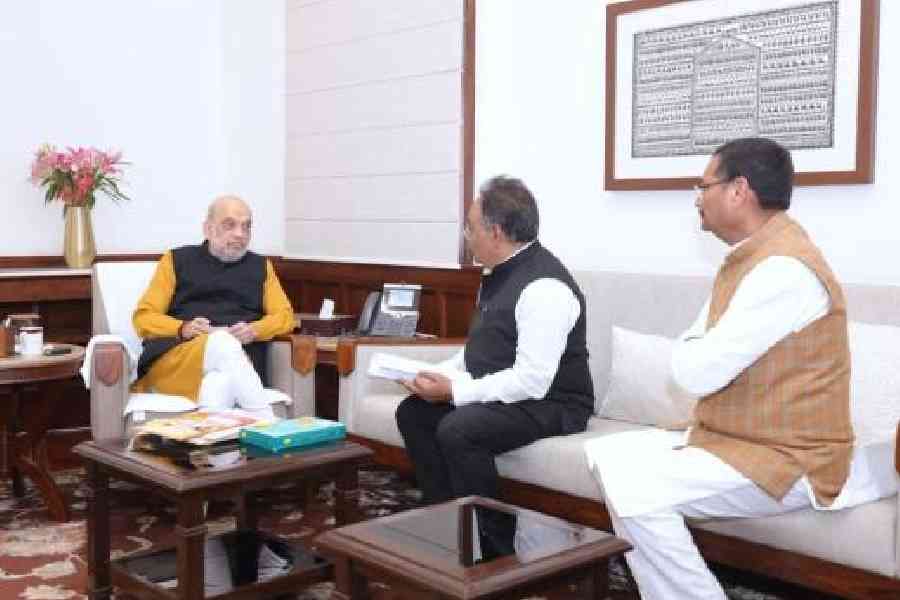
There are various claimants to the title of "world's best cricket writer", yet no dispute about who, today, is the best writer on cricket. This is the Australian, Gideon Haigh (picture). An indifferent cricketer himself (his club is called "The Vincibles", to clearly distinguish it from Don Bradman's all-conquering "Invincibles" of 1948), he has a deep knowledge of the game's technicalities, and a deeper understanding of its history and politics. Haigh knows the cricket world intimately, and the world outside cricket rather well too. He has written books on (among other subjects) crime in Melbourne and on the office as a social institution, and he brings this wider knowledge to his writings on the sport.
The books by Haigh that I myself most admired were his biography of the mystery spinner Jack Iverson, and The Summer Game, his evocative social history of Australian cricket in the 1950s and 60s. These are both weighty works; far slimmer, but sharply insightful nonetheless, is his short book On Warne, that examines select aspects of that bowler's craft and personality. I once took On Warne on a flight from Delhi to Shanghai, reading two of its four chapters before taking a short nap. I then placed the book on the empty seat beside me, planning to read the last two chapters later. When I woke up I found the book had been purloined. I was the only Indian on the flight, and I don't recall many white faces either. Clearly, the culprit was a Chinese fan of cricket and of Gideon Haigh.
Haigh's most recent work is entitled Stroke of Genius. This takes as its point of departure what may - must - be cricket's most famous photograph, of Victor Trumper jumping out to drive, shot by G.W. Beldham at The Oval in 1905, and reproduced a million times since. Thus, as Haigh writes, Trumper became "the earliest sporting luminary to have been, in the main, visually bequeathed; he is as much his picture as Sir Donald Bradman his statistics..."
Trumper is the main character of the book; but the man who photographed him for posterity also gets extended (and deserved) biographical treatment. G.W. Beldham led a rich and varied life and was, in artistic terms, a genuine pioneer. Two other individuals are also central to the narrative. One is C.B. Fry who played against Trumper and collaborated with Beldham, and whose cricketing wisdom peppers the book. Writing in 1900 about the advance of cricket photography, Fry seems to have almost predicted DRS, as witness the observation that "when the machine has been perfected so as to reproduce the picture instantaneously, it may supersede the umpire altogether".
The other is the cricket writer, Neville Cardus, whose paeans of praise for his boyhood hero did so much to make him other peoples' hero too. Cardus compared his hero's skills to Wagner's music and Turner's art. "I would no more forget Trumper's batsmanship," he wrote, "than I would forget gorgeous sunsets, cloud-capped mountains, sonorous cadences of verse and symphony, or the full bloom of the rose."
Cardus made Trumper the finest representative of what he took to calling "The Golden Age of Cricket", which, in his telling, extending from roughly 1890 until the outbreak of World War I. This age began with W.G. Grace as the dominant figure; as it progressed, it incorporated the deeds of batsmen like Victor Trumper and K.S. Ranjitsinhji, and of the bowlers like Wilfred Rhodes, Hugh Trumble and S.F. Barnes. The amateur spirit still hung over the game, while the main (almost sole) national rivalry was between Australia and England. Cardus's Golden Age lasted long enough to take in the early Jack Hobbs, before being extinguished by the First World War. Since Trumper died not long after the war began (at the age of 37), he became, as Haigh remarks, "the ideal personification" of that age, for the quality of his batsmanship and for the nobility of his character, and because "his lingering ill-health could act as a metaphor of the era's fragile, doomed beauty".
Trumper, writes Gideon Haigh, was effectively "the first Australian of his time - the first to be the best in the world at anything". And that photo of him taken by Beldham did a great deal to take his name and fame to later generations. Haigh sums up, with masterly precision, why that photograph has resonated down the ages: "The stroke is both instantly recognizable as the platonic ideal of a straight drive, returning the ball from whence it came, and uniquely Trumper's; this is the way to play it, yet only this batsman can play it this way. Trumper hurtles headlong across the frame, insouciantly out of his ground, taking what's implied is a second stride towards the ball, the safety of the crease far behind. There is no hedging, no half-measure - Trumper is daring all on the basis of his skill...".
Although shot in 1905, and included in a book of Beldham's photos, "Jumping Out" remained little-known until it was reproduced in the Sydney Mail in 1927. Soon it began to reach a wider audience, so much so that "no Australian cricket location was quite complete without it". Prints of the photograph have hung in countless stadia across the world, as well as in the homes of, among others, Dennis Lillee, Steve Waugh, and Bradman himself. Doubtless some or many of the Australian team soon to tour India were impressed by Beldham's picture of Trumper at an early age.
Also among Trumper's admirers was K.S. Ranjitsinhji. When Ranji first saw the young Trumper bat, for New South Wales, before he had even been capped for Australia, the Indian prince predicted that Trumper "will be a very great batsman in this country, and at no distant date". Some years later, by which time he was an acknowledged star, the England cricketer, A.E. Knight (who was also a Methodist preacher), wrote of how the lean, wan, Trumper was "spiritualized with the delicacy of ill-health". "Not in his fascinating collection of strokes," remarked Knight, "nor in their frank and open execution merely, lay the charm; it was a man playing away a power which was himself rather than in him..." It was, continued Knight, "a rare and moving sight to look upon that crowd as it rose en masse to watch the ball strike the fence; to see those people standing in hushed expectation ere breaking into unrestrained delight".
Ranji is one of two Indians to figure in this book. The other is Vasant Raiji, who may be the oldest first-class cricketer alive, and who after his playing days were over devoted himself to chronicling the game and its legends. One of the first cricket books I myself owned was an album of tributes to Ranji lovingly assembled by Raiji. I learn from Stroke of Genius that an earlier anthology compiled by Vasant Raiji was entitled Victor Trumper: Beau Ideal of a Cricketer, whereby "Trumper inspired a book from a man who never saw him in a country he never visited".
In life, and perhaps even more so in legend, the beauty of Victor Trumper's batsmanship was enhanced by the beauty (and simplicity) of his character. Trumper "was a man", wrote one contemporary, "who found delight in the touch of the sun, the green of the turf, the scents and sounds of the open-air life. ... Batting was to him a matter to be taken light-heartedly, and every innings was a new adventure".
In the Australian cricketing imagination, Trumper is in many ways the Other of Donald Bradman. As Haigh puts it, "Trumper was the lyric, Bradman the epic; Trumper was the Athenian, Bradman the Spartan; Trumper's age was identified with Edwardian brio, Bradman's with Fordist productivity." He quotes Arthur Mailey, writing after Bradman's record-breaking tour of England in 1930: "It is fashionable now to break records. Ponsford started it and Bradman is finishing it with a vengeance. Bradman could never do the things Trumper did, and Trumper probably never wanted to do the things Bradman is doing."
C.B. Fry once wrote that "Victor Trumper is, perhaps, the most difficult batsman in the world to reduce to words." Haigh has succeeded splendidly in this regard; explaining in words the elements of his batsmanship, the essence of his character, the significance of his life and legacy to Australian cricketing as well as social history. (The book also, inter alia, makes a significant contribution to the history of cricket illustration and cricket photography.)
The best book on or about cricket is, and perhaps always shall be, C.L.R. James's Beyond a Boundary. On this cricket-lovers across generations and nationalities are in agreement. Gideon Haigh's Stroke of Genius has strong claims to being the second best. Even among his own rich and varied oeuvre the book stands out, for the inventive, innovative, ways in which it makes an image stand in for a man and his character, for a game and its techniques, for a nation and continent passing through tumult and transition.










